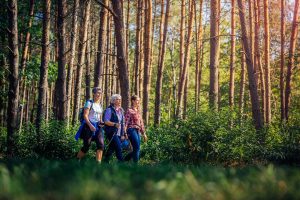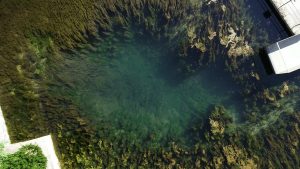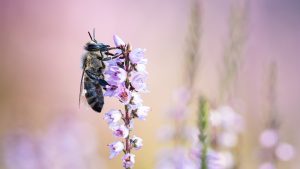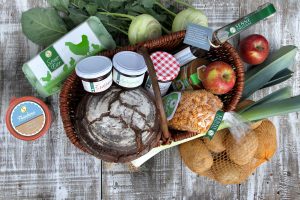After the ice came the forest
During the Vistula Ice Age it was so cold in Central Europe that trees could not grow. The tree species that were native at the time had to move back to the Balkan Peninsula and southern Italy. From there they migrated north again about 10,000 years ago. In the post-Ice Age, light forests of oak and birch dominated the Senne area for a long time. The very competitive European beech is the naturally predominant tree species in all of Central Europe, but it came here very late. As a distinct shade wood species (this is a tree species that grows in the shade of larger trees and gets by with relatively little light), it takes many generations before it could prevail over the predominant types of light wood such as oak and birch (which in turn need a lot of light and accordingly grow very quickly in the initial phase). The soil conditions also played a role in the speed at which the European beech spread. In addition, the first people lived here when the European beech arrived and had a decisive influence on the further development of the landscape. All these factors probably led to the fact that the common beech has not played a major role in the natural vegetation in the Senne.

Oaks and birches – the natural tree species of the Senne
In the Atlantic (also known as the mixed oak forest age), a warm period after the last ice age, which roughly coincides with the Mesolithic, oaks were widespread. Since then, they have steadily declined, even if they were partially supported by forestry in the Middle Ages and in modern times.
There are two oaks in the Senne, the English oak (Quercus robur) and the Sessile oak (Quercus petraea). Both species hybridise with each other, so that in individual cases it is sometimes not easy to decide which tree is exactly in front of you. The common oak is generally more common in the Senne. Both types of oak can be easily distinguished from the leaves and fruits: English oaks have long-stalked fruits and very short-stalked leaves with auricles at the base; Sessile oaks have short-stalked fruits (which, like the English oak, stand together in clusters of 2–5) and long-stalked leaves without auricles.
There are also two types of birch in the Senne. However, the downy birch (Betula pubescens) is restricted to boggy and wet locations and is not very common. In contrast, the sand birch or silver birch (Betula pendula) can be found practically everywhere in the Senne. It is very undemanding and, like pine, can cope with the poorest soils. With the help of the many light fruits it can spread quickly and widely. After the last ice age, birch and pine were the first pioneer trees in the tundra that had been treeless until then. With their white bark and slender growth, birch trees are unmistakable. In old age they develop a black, deeply fissured bark. Birch trees bloom before the triangular leaves emerge. The flowers sit in catkins. On a tree we find both catkins with male and catkins with female flowers.

Pine forests in the Senne region
Pine forests dominated our region shortly after the last ice age, but were replaced by deciduous forests in the course of natural succession. In the natural landscape of the Senne, pine forests were only limited to the edge of moors – here it was too wet and too poor in nutrients for deciduous trees. Only the forest pine (Pinus sylvestris) and the downy birch (Betula pubescens) can cope with these extreme conditions. Since the 17th century, pines were planted in the Senne to fortify the dunes. After the end of the heather farming industry, large areas of heathlands were also reforested with pine trees since the middle of the 19th century. Today they still take up a large part of the forest area in the Senne. Old pines form very light forests with a closed layer of vegetation on the ground. This can consist of grasses, e.g. wire moss (Avenella flexuosa), or from dwarf shrubs, mainly the bilberry (Vaccinium myrtillus).
Here you will find further information on plants and animals that are in the forests of the Senne and on nature reserves in which you can hike through this special habitat.







